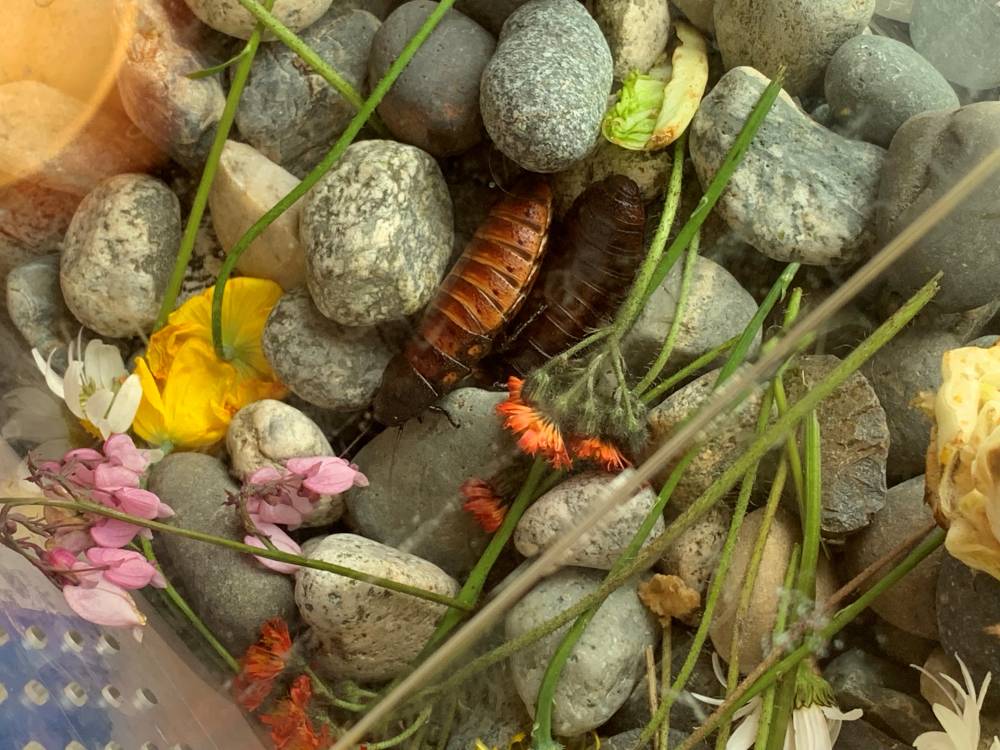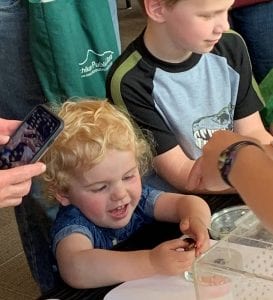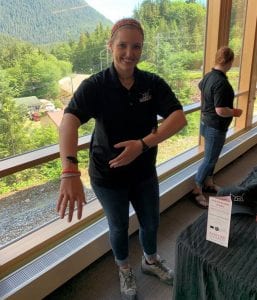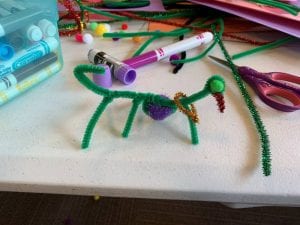
They’re creepy, they’re crawly, they’re about two-inches long – not including feelers – and they recently invaded the Ketchikan Public Library, much to the delight of about 100 kids and parents.
Radford’s Roach Roadshow from Radford University features a tank full of Madagascar hissing cockroaches, and two enthusiastic biology students.
The Madagascar hissing cockroaches didn’t hiss. I asked biology student Rachel Short if we could gently encourage them, so I could record the sound, but the insects refused to cooperate.
“They hiss when they’re trying to defend themselves,” she said. “If they’re being attacked or in danger, they’ll hiss to try and get you to stop.”
Oddly, the roaches were pretty mellow in a room filled with excited children.

Short said that when they do hiss, it can be pretty loud.
“We do have recordings of them, so you definitely would be able to record it if they did, but they don’t seem to be hissing right now,” she said.
So, no hissing. But I seem to be the only one disappointed by that. Everyone else is eager to look at, touch and hold the small collection of roaches.
First, though, a short science lesson.
Taylor Hawkins explains to the kids that she and Short study endocrinology – hormones.
“Which are these little signals that go all in your body. They tell you to grow big and strong and make lots of hair and big muscles and stuff like that,” she said. “They also tell you to make babies.”

That’s where the roaches come in. Hawkins said the lab roaches are encouraged to make lots of babies and eat lots of food.
“And then their frass, which is their poop – looks like this stuff – makes for really good fertilizer,” she said.
The roach poop looked like small dry pellets. Hawkins said they use it to grow flowers and vegetables in the lab, also part of their hormone studies. Short said one of the specific areas they study is cucurbitacin – a hormone in cucumbers that is a natural insecticide.
“It makes their exoskeleton – the outside of their body – it makes them too thick to molt through,” she said. “When these guys get too big for their exoskeleton, they have to molt through it, just like snakes have to shed their skin when they get too big. So, if their exoskeleton gets too thick, they can’t molt through it, they will suffocate inside themselves and they will eventually die.”
So, if you want a natural way to keep bugs out of your garden, grow cucumbers.
Hawkins said that discovery is one of the benefits of hormone research.
“If we know more about the hormones that affect their body, how big they can get and how long they live, then we can learn more about how to implement that into society, create a better and more sustainable pest control, or just really have a better baseline for invertebrate research,” she said.
After the presentation, kids in the audience could make their own insects out of craft supplies left out on the tables, and everyone who wanted could hold one of the roaches.

Patrick Ross was one of them. He said it felt like the roach had little suction cups on its feet, holding the insect onto his arm.
“I liked it,” he said. “It’s my first time seeing a cockroach, but I know lots about cockroaches.”
I asked if he likes bugs
“I like insects,” he answered.
Insects include bugs, but – as Hawkins explained earlier — bugs are insects that have a suction-style mouth for eating. Like mosquitoes.
Fun facts about Madagascar hissing roaches: The males are the ones that hiss, and you can tell if it’s a male because it has little horns on its head; and these particular roaches can live up to five years in the wild.
You can learn more about Radford University’s endocrine research program through this link: https://radfordsroachroadshow.org/





